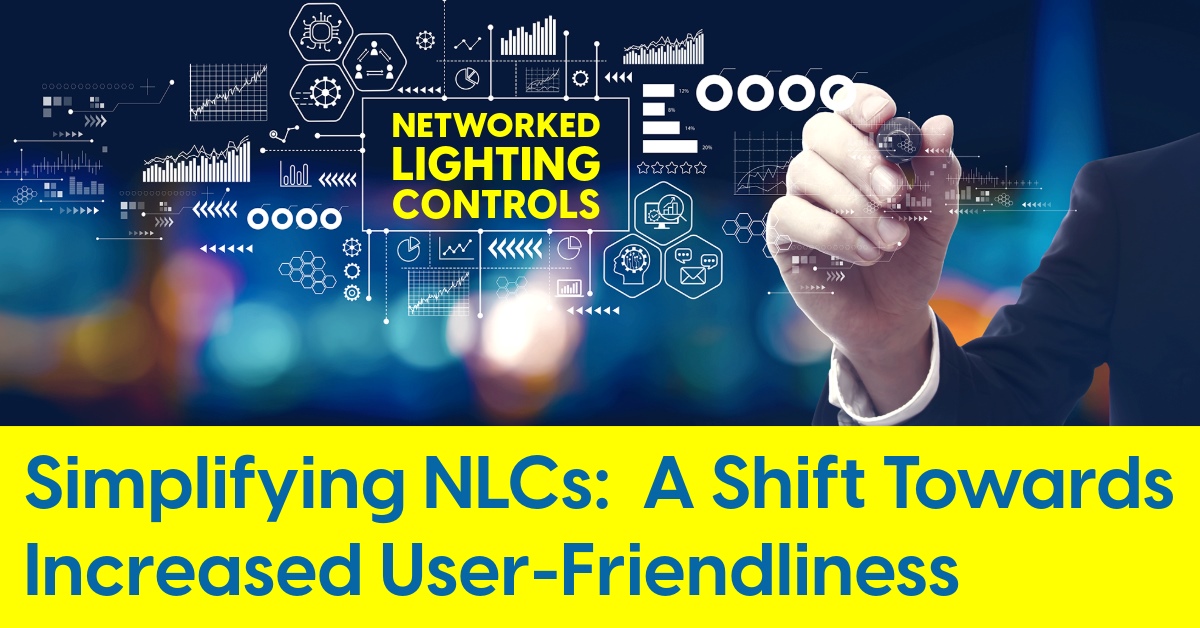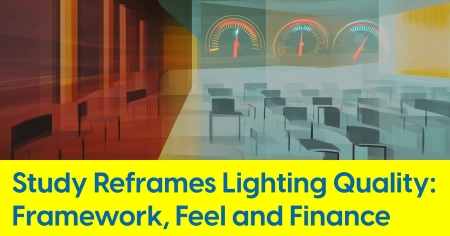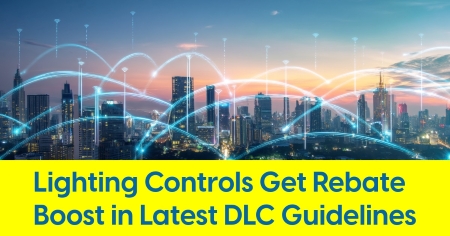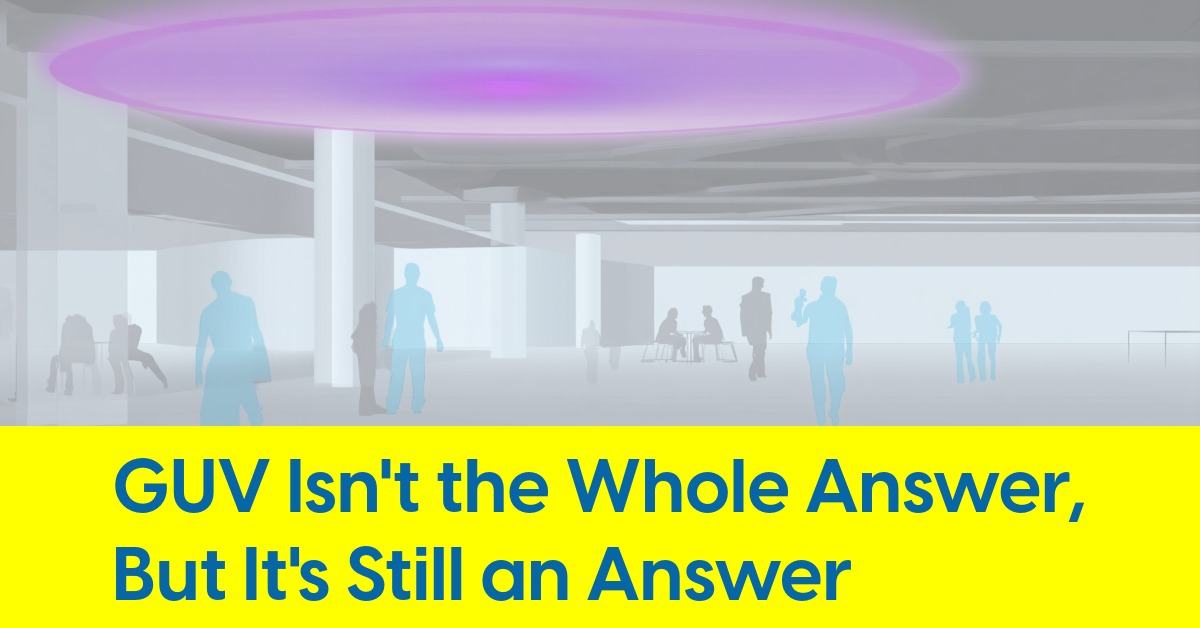January 24, 2024
Simplifying Networked Lighting Controls

Guest Author: Steve Mesh, contributor to the Lighting Controls Association
Steve Mesh explores the shift towards increased user-friendliness among NLC systems
Over the decades spent teaching people about networked lighting controls (NLCs) , I have seen what works in getting newcomers up to speed in understanding and deploying these systems.
I think we have an “elephant in the room” in the lighting controls industry. Many people like to minimize the complexity of these systems so as not to scare potential customers. Over the past 10 years, I’ve repeatedly asked myself this question, “Are we helping people by minimizing the apparent complexity of these systems, or are we doing them a disservice?”
If someone asked me if NLC/LLLC systems are complex as a yes/no question, I’d have to say yes. According to the Merriam-Webster dictionary, one definition of a system is “a regularly interacting or interdependent group of items forming a unified whole.” That already sounds complex, doesn’t it? We all know that NLC/LLLC (luminaire-level lighting control) systems have a variety of parts and pieces. Additionally, they require some form of app or software to program (commission) and operate everything.
Does the degree of complexity rise to the level of rocket science? No! Even being familiar with NLC/LLLC systems I still have the opinion they need to be learned, but they’re certainly not rocket science. I’ve taught thousands of students and was always able to have the entire class able to commission and operate any of the systems used during the class. This includes students who are new to the world of NLC systems. Do I assist by supervising them? Yes, but they do the commissioning.
In the past several years, manufacturers have offered what I would call simplified systems. How have they simplified these new systems? One major way was to create much more user-friendly software. Think about how much money Apple spends to make their iPhones, iPads, and Macs extremely easy to use. Lighting control manufacturers took a similar approach and started to make considerably more user-friendly software for their systems. In the DLC Qualified Products List for NLC/LLLC systems, one of the current filter options is for “Ease of Implementation.” A quick check shows that there are currently 67 systems on the list. Let’s see how these systems are characterized in terms of this:
-
Factory Representative On-Site … 9 systems
-
Factory-Trained Installation Contractor With 1 Day Or More Of Factory Training … 6 systems
-
Installation Contractor With Less Than 1 Day Of Training … 45 systems
-
Installation Contractor With Less Than 1 Day Of Training, Working With Remote Personnel At Factory … 6 systems
-
Other: Non-Standard Installation … 1 system
A full two-thirds of these can be commissioned by an “Installation Contractor With Less Than 1 Day Of Training” (45 of the 67 systems). This tells us that these manufacturers got the message about user-friendliness.
Does this mean these systems don’t have complexity, with a variety of parts and pieces that all have to work together? I guess it depends on how you define complex. One argument is that we should stop getting hung up on the terminology. These systems have a variety of parts and pieces, all of which work together. So what if that sounds complex? I would suggest that we experts should focus on all the truly amazing solutions and value they provide to the designers, building occupants, facility managers, and owners with a vast array of features and benefits, without suggesting of course that a novice could or should install and commission them. Ironically, with many systems, a novice probably could install and commission them! Regardless, I would strongly suggest that we stop trying to minimize the apparent complexity of NLC systems.
Here are some examples of the value that comes from an NLC system:
Occupancy/vacancy sensing
In the days of analog wired occupancy sensors, luminaires would turn On to 100% upon sensing someone in the space. After a space was vacated and the sensors (or at least the area where that sensor was located) and the sensors time delay, the lighting would turn fully Off.
What if you had multiple occupancy sensors in a large open office area – or a warehouse for that matter? Some areas might go dark while other areas had luminaires at full output. In terms of perception and visual comfort, especially the perception of safety (or actual safety for that matter), this isn’t desirable. With an NLC system, luminaires can turn on to any level – thereby saving energy, extending LED and driver lifetimes, as well as mitigating the effect of lumen depreciation.
Upon vacancy, luminaires can dim to a low level – let’s say 10%. The difference in the perception of safety and comfort by keeping lights on at a low level is very marked. At the same time, dimming to 10% output still saves an enormous amount of energy. There was no way to do this with older, analog occupancy sensors directly wired to specific switch legs with fluorescent luminaires containing non-dimming ballasts. This is typically one of those benefits that typically goes unnoticed but makes the space pleasant for the people working within.
Integration with external systems/compliance with code requirements
In the past, it was possible to integrate specific devices in a building. Often, this was done with wired line-voltage connections between circuits and/or switch legs and specific devices.
However, code requirements have become extremely complex in recent years. Why? Authors of code verbiage realized that new technology exists to make this type of integration a lot easier. One example is an NFPA 101 requirement that a fire alarm system triggers a networked lighting control system action. Literally, all that is required to comply with that code requirement is to bring a pair of low-voltage wires or use a digital command such as BACnet to the NLC system, triggering specific behavior of luminaires because the NLC system “got the message” from the fire alarm system. Getting the message may be as simple as a contact closure or other simple input to the NLC system – assuming the NLC system has that function. Another example of how easy and common it is to integrate other systems with NLCs is to share information back and forth between the lighting control and HVAC systems. That’s typically done by using the digital BACnet protocol. Many NLC systems on the DLC Qualified Products List can be programmed to talk to an HVAC system using BACnet.
Zoning changes/preset scenes
In the past, you might have used an architectural preset dimming system to control luminaires in a space such as a house of worship or restaurant. You would have assigned various line-voltage switch legs to specific dimmers or dimmer modules. You could zone lighting in the space by installing several switches or dimmers on the wall – without even having the benefit of a preset scene keypad. If you changed the space configuration, that would necessitate a change in line-voltage wiring to match up the correct dimmers or dimmer modules with the groups of lights you wanted to control.
NLC systems allow you to create zones at will – both initially as well as any time you change the configuration of a space. This is simply a matter of making these changes in the software. No hardware changes or additions are required. Many of the newer NLC systems also incorporate the ability to set up preset scenes. This means that the system has the power of a communicating to all devices and spaces, plus individual addressability for luminaire controllers (LLLC). This provides the cool and often very important functionality of a preset dimming system. For example, you might program scenes for a restaurant so that a time schedule automatically adjusts the lighting presets to suit desired mood for breakfast, lunch, dinner and clean-up. Usually, you can also program different fade transition times. If you used a fade of 30 minutes, the patrons in the restaurant would enjoy the soft ambiance and not notice or be startled by an abrupt change in light levels.
We could go on, but I believe you understand the point I’m making. One could easily write pages about the great (and often very cool) features and functions of NLC systems. If we spoke about to all of the wonderful non-energy benefits, I could complete an entire book on this subject. From years of experience, I have found that it’s easy to get people hooked on NLC/LLLC systems whey they experience how easy they are to wire, commission, and operate. In a matter of hours, attendees are clear that there are great features and functions when they decide to deploy a NLC system. We don’t have to twist anyone’s arm to realize that.
I would like to relate an interesting story. Last October, I was invited to speak at a conference in the Midwest. Since I was traveling to the conference, I decided to spend the week in the region, meeting with customers who had an interest in deploying a NLC system. We met with people who had come to one of my previous training classes. The first meeting was with someone from a very recent training. During the class, he was engaged in learning about NLCs from an educational standpoint, but especially by wiring and then commissioning the NLC we had in the class.
It turns out that he manages a 500,000-square-foot manufacturing plant facility in a rural area. It was interesting to walk through the plant and identify an area where he could install some fixtures and NLC/LLLC controls on a test basis. The classroom training was an academic setting. This was his own company’s facility, and he felt more comfortable doing a small sample area. Some interesting things happened that day. For example, after watching a safety video before entering the plant, I was instructed to turn off the Bluetooth function in my iPhone. Some of the robotic equipment used in the plant utilizes Bluetooth communication, and they didn’t want to risk of having any interference. That might potentially have ruled out the use of any Bluetooth-based NLC system. He now knows that he must check with his IT colleagues to determine that.
The point here is by meeting with these people in their own facilities, I didn’t have to minimize the apparent complexity of NLC systems. They were already sold on the benefits – and weren’t worried about the complexity since they had already wired and commissioned systems in a class setting. All I really did during these in-person meetings was a little hand-holding. That helped to reassure people that there were NLC/LLLC systems that would meet their needs, which wouldn’t be difficult to deploy and commission, and which would give them lots of benefits.
If you think about it, there is a huge amount of value in these systems, precisely because of the complexity – not despite that fact. Going forward, we should look to spend our time and energy trying to promote the why NLC can provide them the power and flexibility and that these systems are incredibly simple vs trying to convince people they are not complicated. They are what they are, and once people get exposed to them, they love them. If you agree, or even if you don’t, I would love to hear your thoughts about this!
The Lighting Controls Association is a council of the National Electrical Manufacturers Association that provides education about lighting control technology and application, including articles, videos, design awards, news, resources, and Education Express, a free, 24/7 series of online courses covering everything from technology to design to commissioning.










